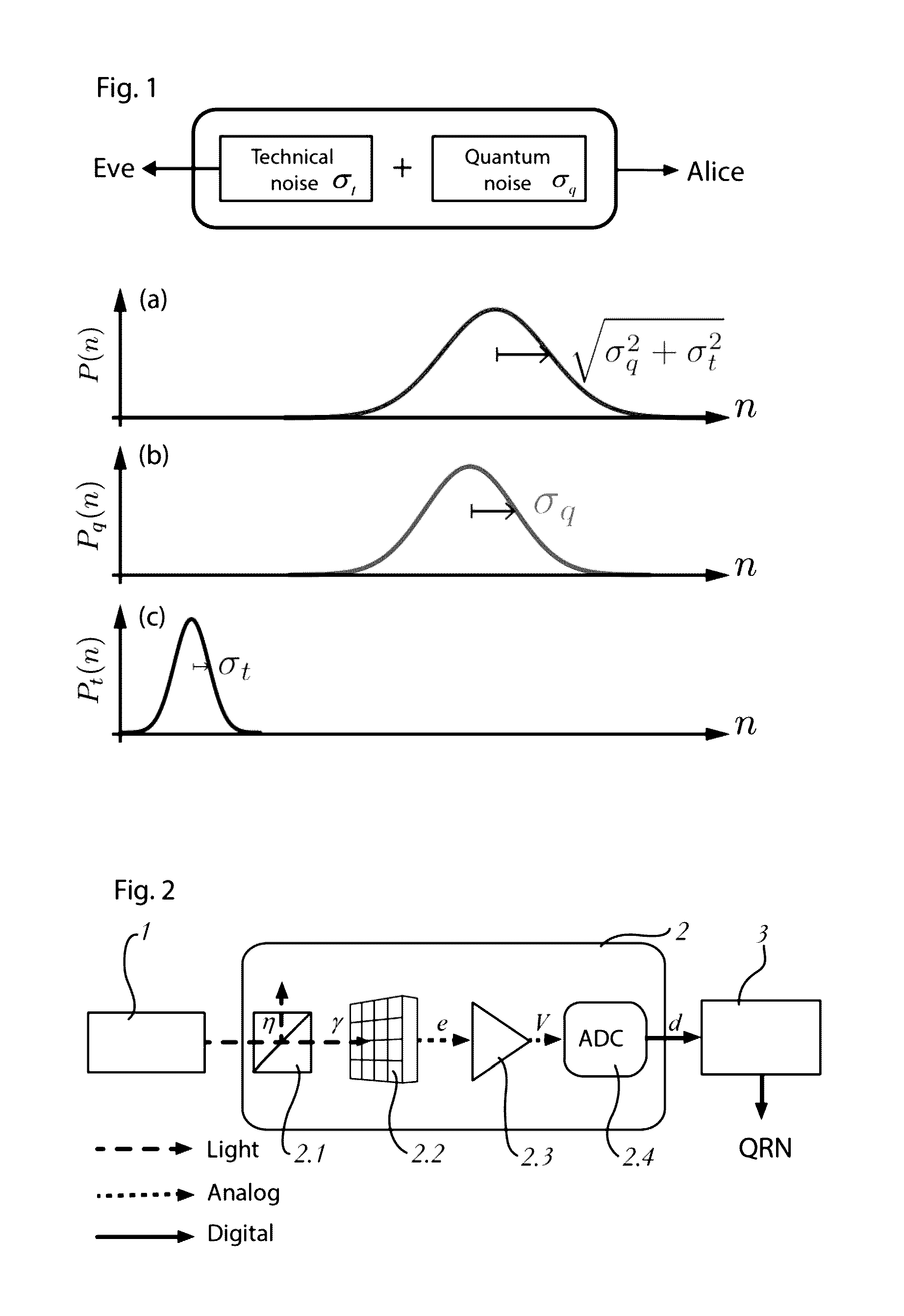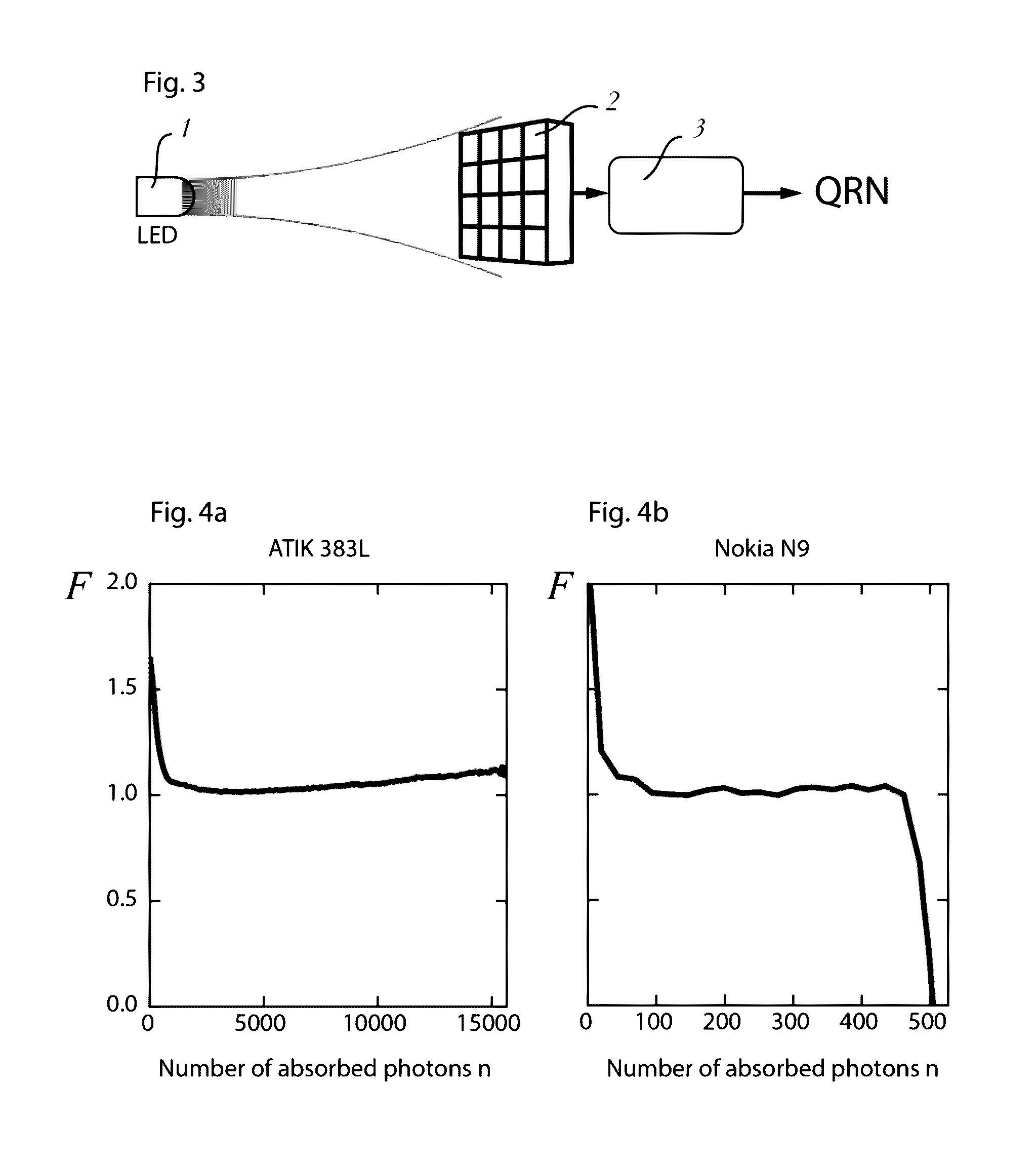Method and device for optics based quantum random number generation
a quantum random number and optics-based technology, applied in the field of optics-based quantum random number generation devices, can solve the problems of key exchange requirements, large quantity of random numbers for implementation, and broken systems and protocols, so as to reduce size, complexity and production costs, and increase the scope of application.
- Summary
- Abstract
- Description
- Claims
- Application Information
AI Technical Summary
Benefits of technology
Problems solved by technology
Method used
Image
Examples
Embodiment Construction
[0022]In the following, the invention shall be described in detail with reference to the above mentioned figures.
[0023]In a first part, the concept of the proposed system, including its various entropy sources and how the entropy of quantum origin can be extracted, shall be described. In a second part, two different embodiments of the proposed random number generation shall be exposed. Finally, the results obtained with the help of these random number generators in terms of generated random numbers shall be presented, including tests performed on the generated random numbers.
[0024]The concept of the present invention relies on the fact that some properties of a quantum state are unknown before measurement as well as fundamentally unpredictable. One such property, used in most known QRNGs, is the path taken by a photon impinging on a beamsplitter. Another such property is the number of photons produced by a light source in a time interval T. It is the latter effect which is used in t...
PUM
 Login to View More
Login to View More Abstract
Description
Claims
Application Information
 Login to View More
Login to View More - R&D
- Intellectual Property
- Life Sciences
- Materials
- Tech Scout
- Unparalleled Data Quality
- Higher Quality Content
- 60% Fewer Hallucinations
Browse by: Latest US Patents, China's latest patents, Technical Efficacy Thesaurus, Application Domain, Technology Topic, Popular Technical Reports.
© 2025 PatSnap. All rights reserved.Legal|Privacy policy|Modern Slavery Act Transparency Statement|Sitemap|About US| Contact US: help@patsnap.com



